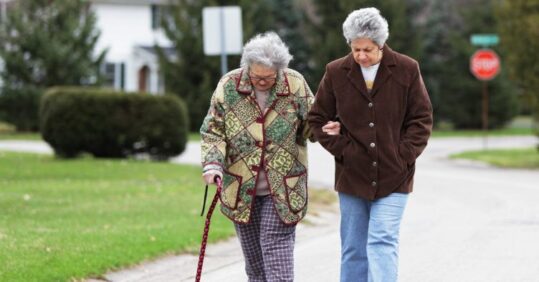Women struggle more than men with daily activities in old age

Daily activities become more problematic for women than men in old age, which may in part be a result of socioeconomic disadvantage, according to a study at University College London.
The researchers found that older women are more likely to be limited in their ‘functional capacity’ than men as they age. For women, daily tasks are more challenging from age 70, and mobility is more likely to be limited from age 50 onwards when compared to men of the same age.
Related Article: Advice on Guillain-Barré risk for adult RSV vaccine updated by MHRA
Some of the differences seen are thought to be a result of women having a socioeconomic disadvantage. The research was published in The Lancet Healthy Longevity.
The study used data from four long-term studies and involved over 60 000 people from 14 different countries. Data from 27,000 men and 34,000 women, aged 50 to 100 years, born between 1895 and 1960 were examined for socioeconomic factors and severity of limitations.
Women were found to have a lower overall functional capacity. From age 75, women were more likely to have three or more mobility issues, such as moving upstairs, or limitations with more complex daily tasks, such as managing money or using the telephone. Men were more likely to have just one or two issues. By the age of 85, the prevalence of three or more mobility limitations was 10% higher in women than in men.
Lead author Mikaela Bloomberg from University College London said: ‘Our study provides new insights on functional limitations and sex differences. This is important because mobility limitations can precede other more severe limitations.’
Related Article: Lower stroke survival odds faced by people in poorer areas
She added: ‘Targeting these gaps at middle age could be one way to reduce sex differences in limitations at older ages.’
Low education and domestic or unpaid labour limit women’s chances of entering the labour market and disproportionately exposes women to health risks that can lead to disability. The researchers found gender inequalities could explain differences in some limitations but not the mobility differences. This might be partly due to sex differences in body composition such as body mass and skeletal muscle index, but Bloomberg stated that more research is needed to identify other factors.
Related Article: Action needed to tackle untreated hearing loss in care homes
The researchers say findings are significant for policymakers and highlight the importance of gender equity in education and employment for health outcomes in old age.
Co-author Dr Séverine Sabia from University College London added: ‘Developing targeted prevention policies to preserve independent living and quality of life for older adults requires an understanding of drivers of sex differences in functional limitations. Our study indicates improvements in socioeconomic conditions for women could play an important role in reducing these sex differences.’

See how our symptom tool can help you make better sense of patient presentations
Click here to search a symptom




